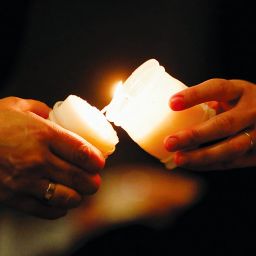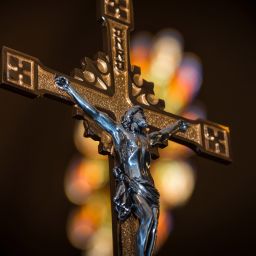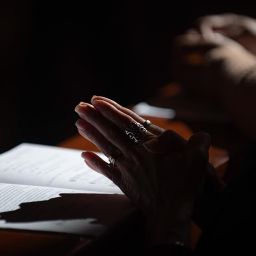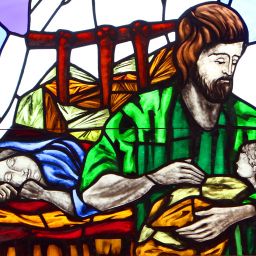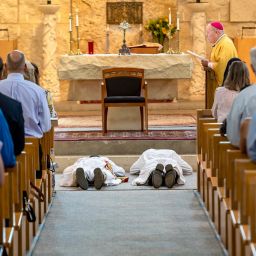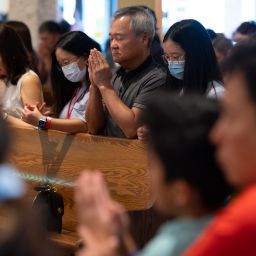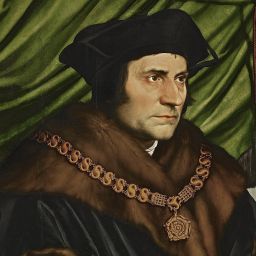By Father John Bayer, O. Cist.
Special to The Texas Catholic
For a while, I have been studying the topic of race in American and Catholic history. It is a difficult topic for obvious reasons, but it is also a rewarding one. In fact, I have been greatly edified learning about figures like Venerable Augustus Tolton, St. Katharine Drexel, Servant of God Thea Bowman and others. If you’re looking for a way into such stories, check out “Black Catholics on the Road to Sainthood” (Our Sunday Visitor, 2021).
At other times, I’ve been humbled to read about the struggles of many American Catholics to find a way to transcend prejudice and let our faith impel us toward holiness in our personal lives and in the society we all shape.
There are some remarkable stories about how much resistance some Catholics gave to integrating schools (consider the difficulty Archbishop Ritter faced in St. Louis in 1947), accepting black priests into parishes (consider the scandalous resistance to Fr. Gerald Lewis S.V.D. in Jesuit Bend, Louisiana in 1955), or seminarians into seminaries. But even here it is essential to search for the light shining in the darkness (cf. Jn 1:5), for God is always working in our history to accomplish the Paschal Mystery, the dying and rising of Jesus in his Mystical Body — the Church. One bright light is Venerable Augustus Tolton (1854-1897), who was rejected by every seminary in America but who nonetheless became the first native black priest after being received in Rome. Isn’t that a beautiful testament to the gift of belonging to the universal Church?
While Christians are vulnerable to the narrowing tendencies of sin — as we all are no matter our culture or country — there is always the Holy Spirit who gives gifts to one member of the Mystical Body in order to build up another. We belong to each other across space and time, and this Spirit-led solidarity pushes us to learn from God by moving toward each other. How precious indeed is Catholic unity! Let us never take it for granted.
Sadly, there are ideologies that risk turning the movement for racial justice into a wedge dividing Catholics and the rest of society. For example, in “How to be an Antiracist” Ibram X. Kendi defines equality in a way that seems to relativize truth, since he argues for a “cultural relativity” that simply declares racist any critique of one culture by another. And in “Racial Justice and the Catholic Church,” Father Bryan Massingale seems to confuse the Gospel imperative to promote racial justice with the secular imperative to promote sexual expressions opposed to nature and grace. Even if friendly dialogue with such authors could yield positive fruit, some of their ideas make it difficult for Catholics to find their way to promote justice without falling into ideology.
Fortunately, there are good books out there that can help us do our best to follow Jesus to true justice and everlasting love. We just have to do a little work sometimes to find and promote them, and of course refuse to accept uncritically whatever voices popular media put before us. One book that I think is especially helpful is “On Earth as It Is in Heaven: Restoring God’s Vision of Race and Discipleship” by Father Josh Johnson (Ascension 2022). One of its merits is to address racial reconciliation within a beautifully Catholic framework of evangelization.
Father Josh frames the promotion of racial justice as part of our Gospel mission to draw all people to conversion and Eucharistic participation, to worship together “on earth as it is in heaven” (Father Josh takes for his guiding image the heavenly Church of every race, tribe and tongue in Revelation 7:9). If I understand him correctly, we should work for justice not because we all bear personal guilt for our ancestors’ sins, but because we all know people whom the Church has yet to draw effectively into the material and spiritual wealth of Catholic solidarity. And when we do atone for sin, as we all should (just ask Our Lady of Fatima), we do so not simply for our own personal sins but also for the sins of others. We always atone in Jesus, and therefore full of divine mercy and love — and never with self-loathing or recrimination.
“On Earth as It Is in Heaven” is full of prayer, conviction and practical advice (especially for parishes and schools). It has saints, Scripture and Church history. Its driving impulse seems to be the experience of divine mercy and a desire to extend it materially and spiritually. There is no better way to promote racial reconciliation than the Gospel. Give it a read!
Father John Bayer, O. Cist., is a monk at the Cistercian Abbey of Our Lady of Dallas in Irving.


